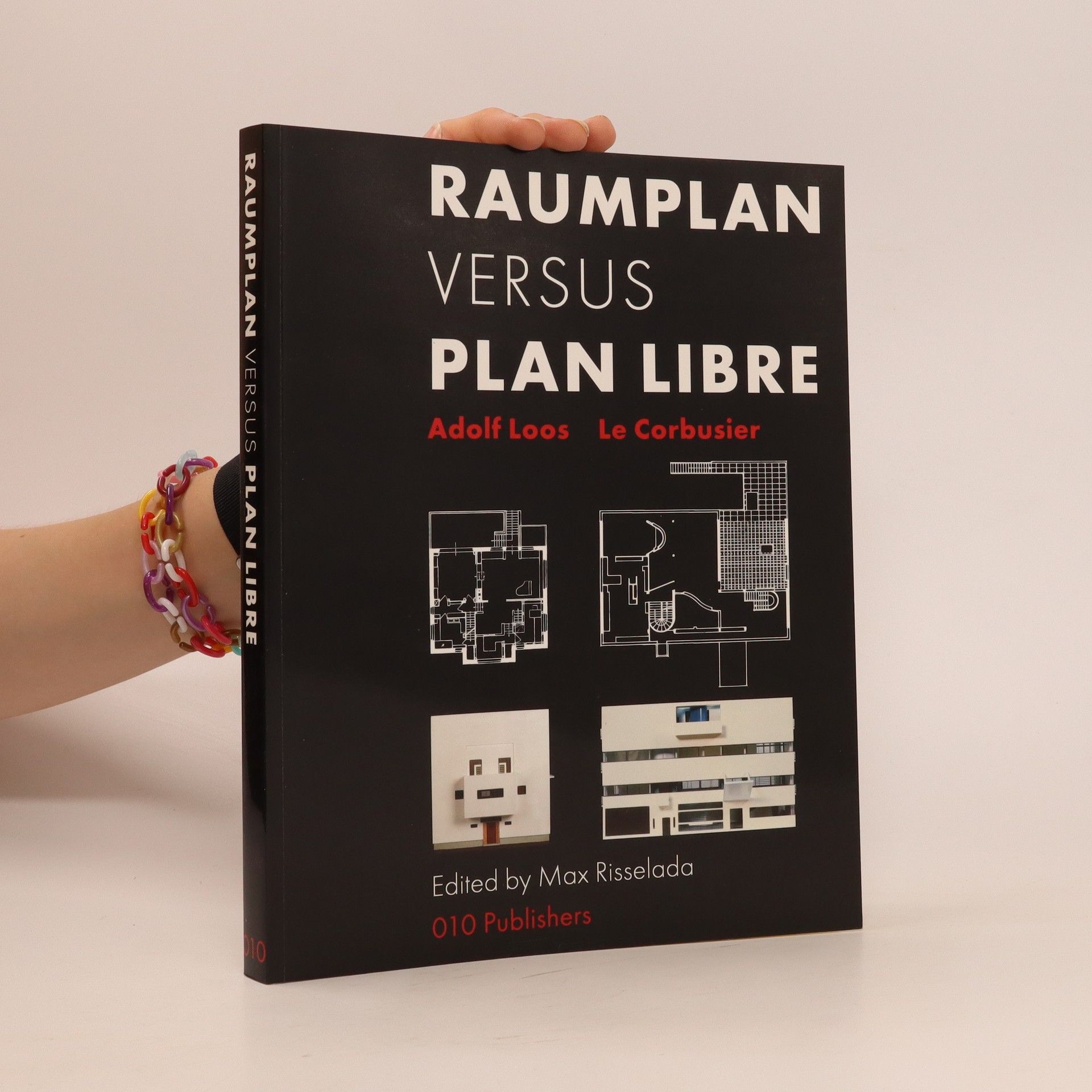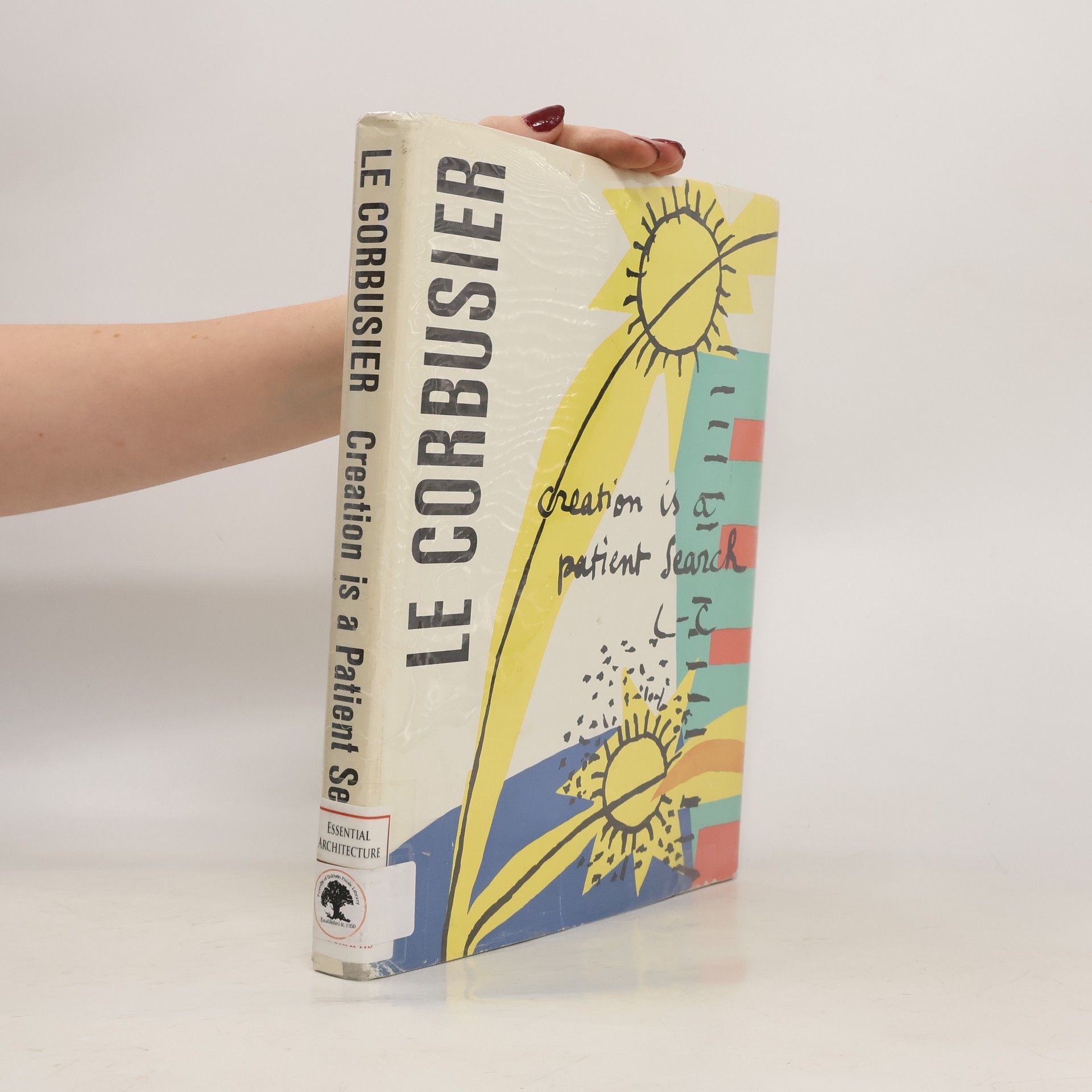Le Corbusier Libri
Questo visionario architetto, designer e urbanista, nato in Svizzera e poi naturalizzato francese, è stato una figura fondamentale dell'architettura moderna. La sua carriera, durata decenni e diffusa in Europa, India e Americhe, è stata dedicata a sperimentare nuovi approcci abitativi e a migliorare le condizioni di vita nelle città affollate. Le Corbusier si è concentrato sul design moderno di alto livello, cercando di rimodellare la vita urbana attraverso le sue creazioni influenti e funzionali.







Raumplan versus Plan Libre
- 198pagine
- 7 ore di lettura
Originally published as a catalogue to accompany an exhibition with the same name in 1987, this new edition re-examines the respective merits of two giants of Modern Architecture Adolf Loos and Le Corbusier. As well as featuring writings by the two architects, the book illustrates their respective evolution, with detailed reference to their domestic projects, ranging from the Strasser House (1919) to the Last House (1932), and from the Maison Domino (1915) to Villa Savoye (1932). Features major contributions form Beatriz Colomina, Jan de Heer and Max Risselada, among others.
Unité d'habitation, Marseille
- 60pagine
- 3 ore di lettura
Le Corbusier's Unité d’habitation in Marseille, constructed between 1946 and 1952, embodies a synthesis of his architectural principles, merging social models with urban planning. This iconic structure has sparked considerable debate, prompting an exploration of the tensions between its ambitious intentions and actual impact. Despite facing criticism, the building remains popular among its residents, offering functional benefits that enhance communal living. Its striking sculptural quality and the dynamic interplay of light and color create a 'personality' that resonates with inhabitants. The design fosters a rich spatial experience, countering the superficiality of modern life with an intensity that engages the senses. From the grand foyer to the vibrant rooftop terrace, and the tranquil residential streets, the building invites a connection with both the sea and mountains. Le Corbusier's atmospheric and scenic architectural techniques provide a cohesive environment that supports individual lives within its spaces. The authors, all qualified architects, delve into the nuances of these effects, with Alban Janson teaching architecture fundamentals, Carsten Krohn as a Berlin-based author, and Anja Grunwald specializing in architectural photography at Karlsruhe University.
Precisions on the Present State of Architecture and City Planning
- 304pagine
- 11 ore di lettura
Precisions on the Present State of Architecture and City Planning, or 'Precisions', as the book is commonly known, originated from a series of ten lectures presented by Le Corbusier in Buenos Aires in 1929. Concise summations of the Swiss-born French architect's pioneering philosophy, the lectures contain some of Le Corbusier's most compelling aphorisms and cover topics ranging from technique, design and human scale, and the 1927 League of Nations competition to the teaching of architecture and an analysis of the transformation of his own work over time. This new edition presents the 'Precisions' lectures to a new audience. During the lectures, Le Corbusier punctuated his points with a series of improvised crayon-on-paper drawings. This is the first edition to reproduce all forty drawings in color. The book also includes Le Corbusier's introduction, appended in the 1960s, which describes the tremendous impact the city of Buenos Aires had on the architect - its beauty and vast potential, as well as the considerable challenges presented by this city 'trembling on the verge of great works'. A new additional essay by Tim Benton places the lectures in context with the larger body of Le Corbusier's work. Finally, an appendix has been added with brief descriptions of key figures and events discussed
Towards a New Architecture
- 289pagine
- 11 ore di lettura
This pioneering proclamation by the great architect expounds Le Corbusier's technical and aesthetic theories, views on industry, economics, the relation of form to function, "mass-production spirit," and much more. Profusely illustrated with over 200 line drawings and photographs of Le Corbusier's buildings and other important structures.
The City of To-morrow and Its Planning
- 301pagine
- 11 ore di lettura
Analyzes the old structure of cities, suggests a new approach to city planning, and shows specific street and building plans
Le Corbusier’s “self-portrait” of his career, from his early student days to the completion of the convent at La Tourette, written when he was 71 years old.
A Little House
- 84pagine
- 3 ore di lettura
Villa le Lac, which was designated a World Heritage in 2016, was designed and built by Le Corbusier as Geneva lakeside home for his parents in 1925. Because of its spare arrangement of spaces, he referred to it as a "dwelling machine." Even today it remains the modern prototype of the "small house" that fulfills all of the functions of a residence with a minimum of floor area and seamless transitions between spaces. For the first time, this book is appearing in three separate language editions, following the original edition in which Le Corbusier documented the history of the building: with photographs, sketches and a poetic text. Access to the original photographs allowed the quality of the illustrations in this edition to be improved significantly.


